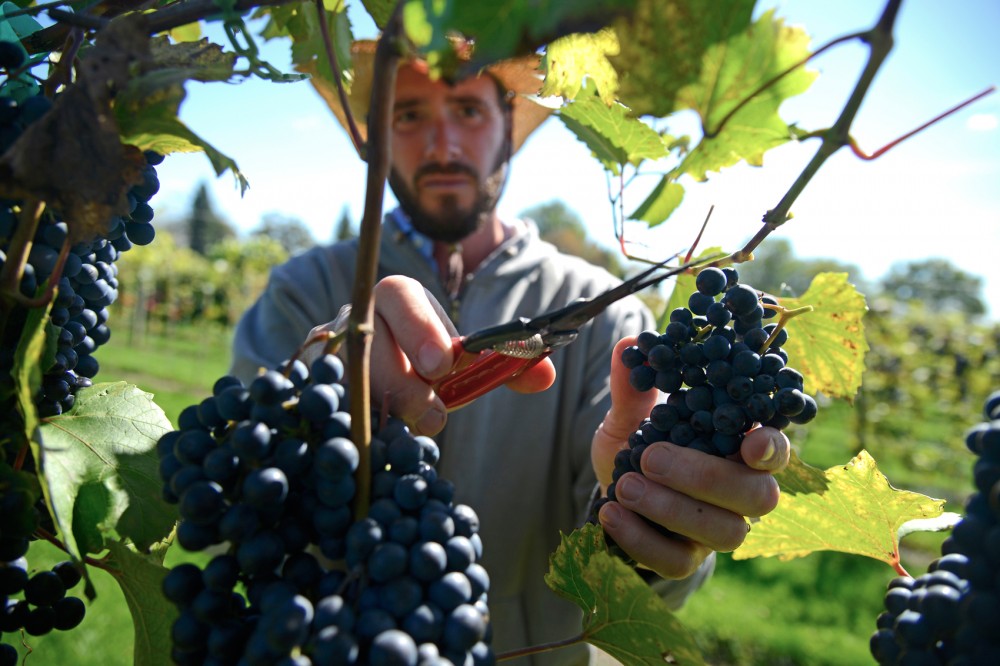The University of Minnesota touts a popular legacy of apple breeding, but earlier this month, the school debuted a fruit that fans can sip on.
The Itasca, a cold-hardy wine grape, will make its way to nurseries and licensed growers’ vines in 2017.
It will be about another four years until Itasca-based dry white wines will hit liquor store shelves, said University grape breeder and horticulture professor Matt Clark. But when it does, he said, it will provide a needed complement to drinks derived from the six existing University varieties cultivated specifically for winemaking.
“They’re delicious wines, but they’re not well-suited when you want a dry wine with a nice meal,” he said.
While the University has bred fruit for over a century, Clark said their focus on wine grapes didn’t burgeon until the 1980s. In order to develop grapes suitable for Minnesota wine, he said, they would have to be able to withstand the state’s harsh weather.
Because of their bred resilience, the cold-hardy grapes fill a gap in Northern wine markets, where traditional grapes can’t survive.
The low-acidity, high-sugar Itasca grape was created by cross-pollenating the Frontenac gris grape with an unnamed Minnesotan wild grape, said Peter Hemstad, the University grape breeder who began the project.
Itasca’s minerality is punctuated by tones of pear and melon, Clark said. To others on the team, he said, the flavor evoked notes of violet and starfruit.
“It was a target for us for many years, and we finally found one that had good disease resistance, had very nice cold-hardiness and made a very nice, neutral white wine,” said Horticultural Science professor and University fruit breeder Jim Luby.
Growers on the East and West coasts — as well as Canada — make wine from University-developed grapes, since some states, among them Vermont, don’t have their own grape-breeding programs, Hemstad said.
University Senior Economic Impact Analyst Brigid Tuck said she expects Itasca’s reach will be similarly continental.
“It gives us an opportunity to brand cold-hardy wines as being equal in quality and taste to other wines out there,” Tuck said.
Minnesota’s wine market has grown significantly over the past few decades, Tuck said, bounding from two established wineries in the 1970s to the now more than 50.
After releasing the Marquette grape, the University noted upticks in the local wine economy, she said.
“We’re headed into a more mature industry,” she said.
President of the Minnesota Farm Winery Association Linda Seppanen said she’s eagerly anticipating Itasca’s engineered superiority compared to other market grapes.
“It is an improved grape, and with better chemistry, we can keep on improving the style of wine that we provide,” she said.











